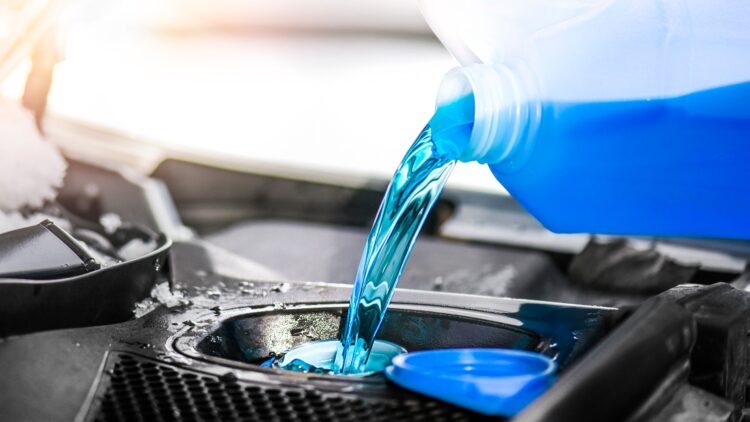Have you ever had visitors who—without warning—opened the curtains and tried to look out the window to see the view, only to be met with windows so dirty that they seemed almost translucent? We’ve all been in this situation where we say, “I wish the ground would swallow me up.” It seems that every time we clean the windows in our house, the very next day it starts to rain or there’s even a sandstorm. If it’s hard enough to keep the house clean, it’s normal to feel frustrated when trying to keep the windows spotless and shiny.
That’s why household cleaning hacks are all the rage on social media. For years, the two big favorites have been white vinegar and baking soda—although it’s difficult to mix these two on a vertical, non-porous surface. However, an unexpected contender has emerged from the car garage itself. It’s the new viral hack that’s taking Instagram and TikTok by storm: using car windshield washer fluid on our home windows. And it makes sense—is there any glass more exposed to dust, dirt, and insects than a vehicle’s windshield?
Water-repellent solution from heaven (I mean, the garage!)
The trick is as unusual as it is simple. The cleaning and domesticity influencers are simply pouring this standard windshield wiper fluid into a spray bottle. First, they thoroughly clean the windows, and when they are clean and shiny, they spray the glass and wipe it with a microfiber cloth.
With this method, the view stays clear for much longer, as the windshield washer fluid repels water. Suddenly, you have hydrophobic windows. Considering that this type of product is sold by the gallon, it is very affordable, even if you have large windows facing the outside.
The truth is that it seems very novel, and it may work to a certain extent. Standard windshield washer fluid has a solid chemical base. After all, this fluid contains detergents and alcohol—usually methanol or ethanol. These components are excellent solvents that quickly dissolve grease. It also contains hydrophobic additives that prevent mosquitoes (and other bugs) from sticking to the windshield so easily.
Car vs Home
However, nothing is a panacea. This product is designed to be applied to windshields that are subjected to strong winds and high speeds. It is precisely this intense and constant airflow that causes the hydrophobic coating to cure evenly. When applied to our windows—unless we live in an area prone to hurricanes and strong storms—it will not be subjected to this type of wind, but will remain in a fairly static position. If we apply the windshield cleaner to our window incorrectly, it can create a residual film that dries unevenly, leaving milky streaks that are difficult to polish.
This is why it is advisable to clean the windows first and then spray on a very thin layer of windshield cleaner. Then you have to rub it in evenly to leave a completely uniform hydrophobic film. However, although the coating repels water, some cleaning professionals warn that it can attract dust and pollution from the environment more quickly. The only way to find out if this is true is to experiment.
Warnings about windshield wiper fluid
Although it is all the rage on social media, we must handle this product with caution. Windshield wiper fluids contain Danol, which is a toxic chemical, and its vapors are dangerous and can be inhaled in enclosed spaces. That is why ventilation is mandatory and extremely important when using this product.
We strongly recommend using it exclusively on exterior windows, not on the inside. Furthermore, although it may be tempting to apply it to shower doors—as many influencers suggest on Instagram and TikTok—we advise against its use due to the lack of ventilation in bathrooms and because this product was never formulated to come into close contact with humans in a warm, humid environment. After all, if you or your family members are showering, you will be exposing yourselves to this product with a water-repellent coating. We know you like to have a shower screen without limescale, but your health is more important!

